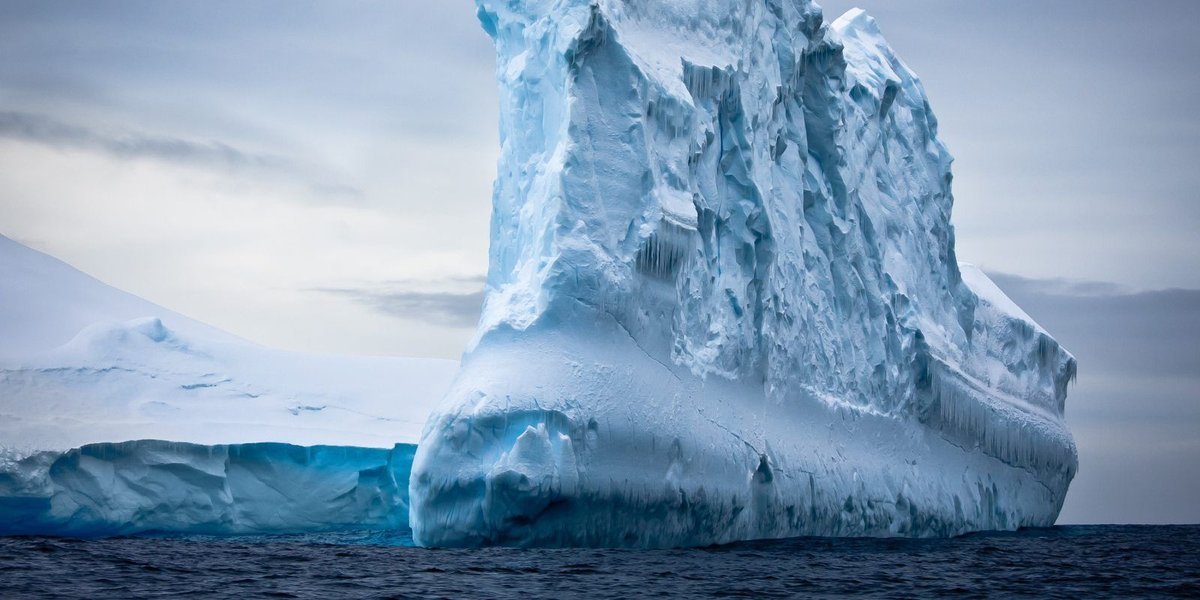NATICE: THE NAVY FACILITY THAT WATCHES ICEBERGS ALL DAY LONG

Advertisement
Believe it or not, the U.S. military has an entire department dedicated to tracking icebergs. NATICE, or the U.S. National Ice Center, checks in weekly on these large floating hunks that break off from glaciers and watches their movement across the ocean. Why, you may ask, does the military take such an interest in splinters of ice? Let’s talk about it!
Suggested read: Dive Into NOOC’s Naval Oceanography Mine Warfare Center, If You Dare
Why Is NATICE So Focused on Icebergs?
We all know of the RMS Titanic, the most popular ice vs. ship catastrophe in our history. Part of NATICE’s purpose is making sure incidents like that are avoided. The U.S. National Ice Center is actually run by the U.S. Naval Meteorology and Oceanography Command, based in Suitland, Maryland, and is the only organization on iceberg watch across the globe. They’ve been active since after the Second World War to monitor ice for their own ships. The icebergs that NATICE tracks are large and can move rather quickly. This makes them extremely dangerous to moving ships. Right now, there are 53 icebergs being monitored in Antarctica that are each at least 10 nautical miles (18,520 meters) long. The average speed at which icebergs drift is around .7 kilometers per hour, but speeds over 3.6 kilometers per hour have been documented. Navy ships are able to confer with NATICE analysts to get news of current ice formations and forecasts on future ice movement. This information is also important to receive on a climate level.Climate Change and Military Planning
Ice caps and glaciers are a part of the water cycle and have great influence on the weather. When glaciers melt, the sea level increases, and with it, so does coastal erosion and storm surge as warming air and fluctuating ocean temperatures generate hurricanes and typhoons. This doesn’t apply to icebergs, however, as they are already floating in the ocean and will not raise the sea level as they melt. Icebergs melting are important to the environment in that they supply half the fresh water entering the ocean. NATICE analysis consistently documents sea level and takes note of when the breaking of glaciers is climate-change related. This data influences the sea level rise map from the National Oceanic Atmospheric Administration. NATICE also provides many products on the Arctic, Antarctic, Great Lakes, and Mid-Atlantic. Daily Marginal Ice Zones, Iceberg Charts, Weekly Ice Concentration, and 30-Day Ice Changes are just a few of the products offered, all of which are available for access to be downloaded. So, while the National Ice Center’s work is focused on safe and efficient navigation, their data is used by scientists to better monitor and understand climate change. “Climate change is dramatically increasing the demand for military operations and, at the same time, impacting our readiness and our ability to meet those demands while imposing unsustainable costs on the department,” said Joe Bryan, a Defense Department special U.S. military climate advisor. In order for our military to operate efficiently and keep its advantage, it’s imperative to continually utilize departments like NATICE and invest in becoming more resilient to climate change.Advertisement
All Thanks to NATICE
So, it turns out that NATICE is a much more useful organization than it originally sounds. Their research and data have such a large impact on how the military navigates oceanic territory and keeps them abreast of climate change and its possible impacts. In an interview with Sandboxx News, Katherine Quinn, U.S. Navy Ice analyst, said, “Our work is and always has been important. And I think we’re also increasing our customers because of what we do and the services that we provide… they’re telling these commands, ‘Hey, if you need ice analysis, the National Ice Center’s got it for you.' “ Well, you heard her, NATICE is the “one-stop-shop” for all your ice data needs. Read next: Parris Island Lettuce and Marines Affected by Climate ChangeWritten by
Ashley Nation
Ashley Nation is a Contributing Writer at VeteranLife.com.
Ashley Nation is a Contributing Writer at VeteranLife.com.
Advertisement
SHARE:



